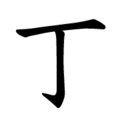J/ψ particle facts for kids
J/ψ mesons (pronounced "jay-sigh") are super tiny subatomic particles. Think of them as incredibly small building blocks of the universe, even smaller than atoms! Each J/ψ meson is made of two even tinier pieces: a charm quark and a charm antiquark.
Contents
What are J/ψ Mesons?
J/ψ mesons belong to a family of particles called Mesons. All mesons are "composite particles," which means they are made up of smaller parts. Specifically, every meson is built from one quark and one antiquark. Quarks are fundamental particles, meaning we don't think they can be broken down into anything smaller.
Tiny Building Blocks
Imagine quarks as the basic LEGO bricks of some particles. There are different types, or "flavors," of quarks, like up, down, strange, charm, bottom, and top. An antiquark is like an "anti-version" of a quark. When a charm quark and a charm antiquark stick together, they form a J/ψ meson.
The Exciting Discovery
The discovery of the J/ψ meson was a huge moment in physics! It happened in 1974, almost at the same time, by two different groups of scientists. One group was led by Burton Richter at the Stanford Linear Accelerator Center (SLAC) in California. The other group was led by Samuel Ting at the Brookhaven National Laboratory in New York.
Finding the Charm Quark
Before the J/ψ meson was found, scientists only knew about three types of quarks. The discovery of the J/ψ meson proved that a fourth type of quark, the charm quark, really existed! This was a big step forward in understanding how matter is put together. It helped confirm the "Standard Model" of particle physics, which describes the basic forces and particles in the universe.
How J/ψ Got Its Name
The unusual name "J/ψ" comes from the two different names chosen by the two groups who discovered it. Burton Richter's team called their new particle "ψ" (psi), which is a letter from the Greek alphabet. Samuel Ting's team called their particle "J." To honor both discoveries, the particle was given the combined name J/ψ.
Images for kids


